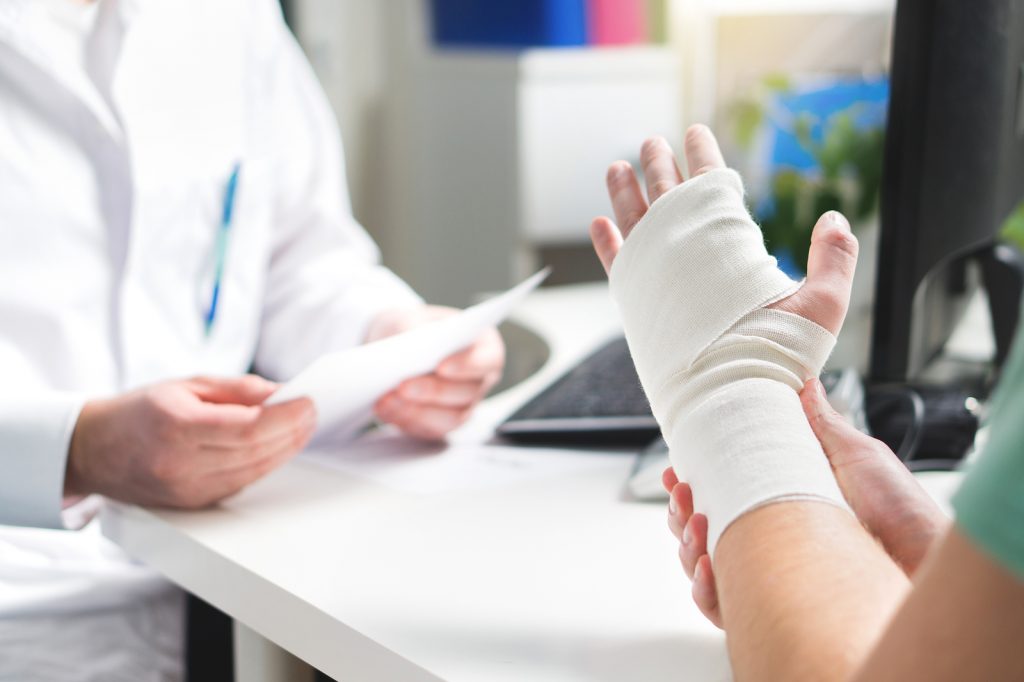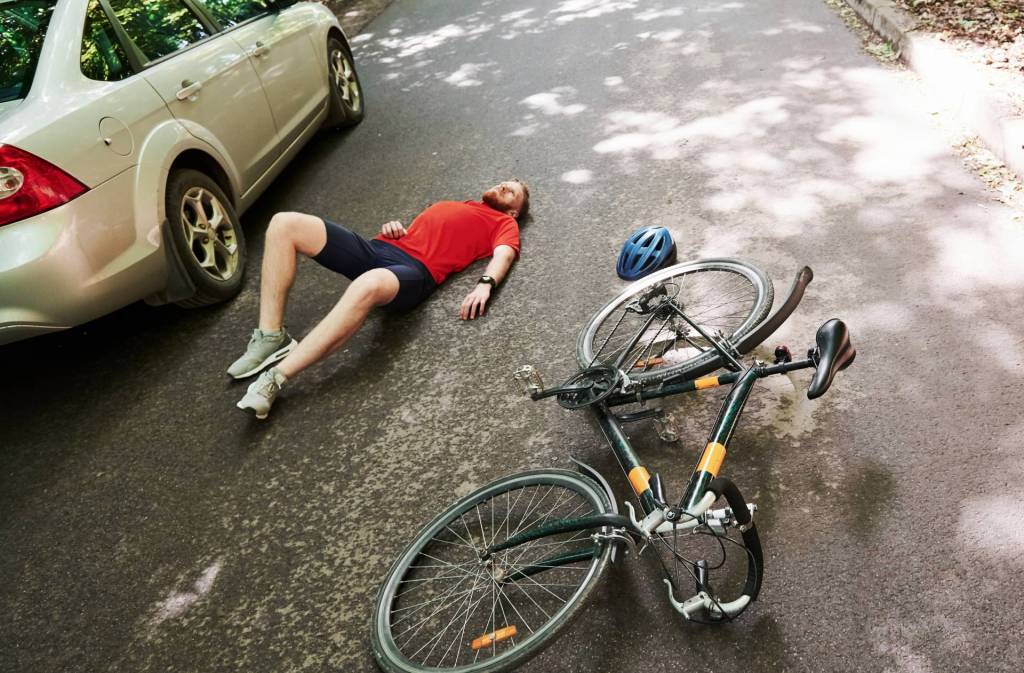Main Takeaways:
- A larger proportion of vehicle/pedestrian collisions took place in crosswalks in 2017 when compared to 2016.
- 77 percent of pedestrian victims sustained either no injury or only minor ones
- 80% of the 225 pedestrian victims experienced either no injury or minor injury in 2017.
- HRM had zero pedestrian fatalities in both 2016 and 2017
- In 2017, peak time for collisions were between 11am -1pm, while peak day for collisions was noted to be Wednesday – Fridays. Thursday is noted to have the highest number of incidents; 43 out of 219.
Pedestrian and Motor Vehicle Accidents in Halifax: The McKiggan Hebert Report
Living in one of the most beautiful cities in Canada, it’s pretty common for many of us to take a morning jog or walk around Halifax. Thankfully, getting around downtown Halifax is usually a pretty safe proposition.
Not always, though. Pedestrian and motor vehicle collisions happen on a fairly regular basis in Halifax, and sometimes the results can be tragic, even fatal. It’s important to understand these trends in order to protect yourself and your family. That’s why we compiled the 2017-2018 Halifax Accident Report; it includes the most recent statistics, a map of pedestrian & motor vehicle accidents in downtown Halifax, and tips to stay safe while navigating the city we are proud to call home.
Halifax Accident Map – Pedestrians and Motor Vehicles
We worked with the Halifax Police Department to compile this map of all accidents in East, West, and Central Halifax; It plots all of the pedestrian and motor vehicle collisions in our city in 2017 and 2018 when data was available. There are separate icons for pedestrians and motor vehicles, but in both cases, darker icons represent more accidents that occurred at a given intersection.
In 2017, there were 280 vehicle/pedestrian/bicycle collisions were reported. Of those collisions, 61 involved a bicycle. The remaining 219 incidents were vehicle or pedestrian incidents with 225 pedestrian injuries and/or fatalities. The 219 incidents represent an increase of 13 incidents over 2016 numbers.
Halifax Central Division
The Central Division reported an increase of 16 collisions in 2017 compared to 2016. It also had the most incidents in 2017 than any other Division.
What does the data tell us? There are a number of pretty dangerous intersections in downtown Halifax that have been the site of multiple collisions:
North & Gottingen (difficult intersection)
Gottingen & Uniacke (Crosswalk)
Robie & Cunard (pedestrian traffic – Halifax Commons)
On Spring Garden between South Park and Brunswick (more shops)
Brunswick & Gottingen (Scotiabank Centre)
Inglis & Tower (Saint Mary’s University)
Halifax East and West Division
Halifax East reported an increase of 5 collisions in 2017 compared to 2016, while the West Division reported a slight decrease of 1 incident in 2017 compared to the prior year.
East Division
West Division
All Halifax Regional Police (HRP) Divisions
When comparing 2017 to 2016, HRP reported an increase of 20 collisions or 12.12%
In Halifax East Division, Portland and Eisner St show a few accidents, most likely coming out of Atlantic Superstore. There is also increased accident activity on Highway 7 and Ochterloney.
In Halifax West Division, accidents were centered around the Halifax Shopping Centre, Walmart, and the Atlantic Superstore and Bowlarama

2017 Accident Data Takeaways
- A larger proportion of vehicle/pedestrian collisions took place in crosswalks in 2017 when compared to 2016.
- 80% of the 225 pedestrian victims experienced either no injury or minor injury in 2017.
- HRM had zero pedestrian fatalities in both 2016 and 2017
- In 2017, peak time for collisions were between 11am -1pm, while peak day for collisions was noted to be Wednesday – Fridays. Thursday is noted to have the highest number of incidents; 43 out of 219.
- For the past 2 years, 2016-17, accidents fall during summer months and begin increasing in August. Accident numbers are steady from November through January, and then begin to fall again.
It probably doesn’t come as a surprise to anyone that lives in Halifax that a few of the most dangerous intersection for pedestrians is at Spring Garden and South Park Street, and North St. and Gottingen.
Casualty Rates in Canada: Roads are Generally Getting Safer
While motor vehicle collisions are still a regular occurrence in Canada, the number of fatalities that result from them is steadily dropping, according to Canada Motor Vehicle Traffic Collision Statistics. A 2 percent increase in fatalities was noted between 2015 (1,860) and 2016 (1,898), but from 1995 to 2015 annual fatality rates steadily dropped from more than 3,000 to below 2,000—a significant change for the better.
Nova Scotia Casualty Rates
In Nova Scotia, there are 5.1 fatalities per 100,000 people, which is slightly lower than the national average of 5.2, and less than half the rate as the most dangerous province, Saskatchewan. Despite this, your odds of being injured – sometimes severely – are higher. For the same 100,000-person segment of the population, 508.6 people were injured in 2016.
Source: https://www.tc.gc.ca/media/documents/roadsafety/cmvtcs2014_eng.pdf (page 4)
Pedestrian Collisions
You’ll be happy to hear that in Halifax, and in Canada in general, pedestrian collisions are relatively rare. There were 69.46 pedestrian accidents per 100,000 people in Halifax in 2017. I think you will agree that even one collision is too many if it can be prevented.
Approximately one-fifth of the 280 pedestrian collisions reported in Halifax in 2017 involved bicycles; the rest occurred to pedestrians on foot. The good news? Few of these accidents are fatal. Halifax saw no pedestrian fatalities in 2016 and 2017, and only 2 thus far in 2018. In addition, 77 percent of pedestrian victims sustained either no injury or only minor ones.
What does this mean to you? That you don’t need to spend a ton of time sweating the chances that you or a loved one will be killed while walking along the road in Halifax.
However, we do recommend the following tips when walking:
- Always use a sidewalk or the shoulder of a road versus walking in the road
- When crossing the street, use a crosswalk, either marked or unmarked (both are roughly as safe)
- Be extremely careful when crossing at a traffic signal, as that’s where the majority of pedestrian accidents occur.
Also, be careful when walking after school or work; from 12pm – 5pm is when the most accidents occur:
Source (page 20)
Digital Dangers
Now, with the advent of ever-greater advances in digital technology, new dangers are rearing their heads on Canadian roadways, as well as around the world. One Vancouver couple lost their unborn child after a distracted driver plowed into them. This is becoming more and more common, leading Canadian lawmakers to consider increasing the fines associated with distracted driving … which as of the time of the accident were less than $200 in British Columbia, where the crash took place. They have since been raised to $368.
Here in Nova Scotia the provincial government increased the fines last year for distracted driving. As of February 1, 2015 the new fines are:
- $233.95 for a first offence (rising from $176.45)
- $348.95 for a second offence (rising from $233.95)
- $578.95 for a third or subsequent offence (up from $348.95)
Other even more exotic dangers lurk as well. The Google self-driving car, for instance, has suffered its share of setbacks in an effort to pave the way for a safer, more regulated driving world. While Google says the cars have not been responsible for any of the accidents that have yet occurred – 14 in 6 years, reports CBC News – the idea of cars helmed by robots and algorithms rather than humans does have some people nervous. Still, the best approach is still to maintain the highest degree of roadway awareness and safety, whether you are walking, bicycling, riding or driving.
Protect Yourself, Protect Your Family
So what’s the bottom line? Why do you need to know about all these statistics? Well, first of all, it does help to know what actions will put you in the most danger, and which will keep you safest. Staying on sidewalks and using crosswalks, for instance, are the best way to ensure your safety if you are walking. Ditto driving defensively and making sure children have the appropriate protection.
It’s also important to get the help you need if the worst does happen. If you have been injured in a motor vehicle accident, you should get help from a personal injury lawyer who is experienced in car accident claims. It’s possible the accident wasn’t your fault, in which case you can seek damages and compensation from the responsible party. Maybe you were both at fault, in which case you will want to ensure you don’t have to take more than your fair share of the blame, or perhaps you need help even determining who was at fault and would like a lawyer’s help sorting through the information.
It’s only natural to be worried about damages to your car and your own personal well-being, which is why we recommend speaking to a lawyer as soon as possible. Recording the incident, creating records for any injuries to your person or destruction to your car, and writing out reports of what you think happened are all good steps to take to prepare to make your case.
When you’re ready to speak to a knowledgeable, professional representative about your accident, give us a call at McKiggan Hebert. We look forward to helping you.
Want more information?
We have been representing victims of serious personal injuries for more than 25 years. We wrote the public legal education guide Crash Course: The Consumer’s Guide to Car Accident Claims in Nova Scotia to help educate car accident victims and their families so they can have a better chance of receiving full and fair compensation. Crash Course is available for sale on Amazon. Sale proceeds go to charity. But if you live in Nova Scotia, you can get a free copy of the book by CONTACTING US HERE, or by calling us at 877-423-2050.
























